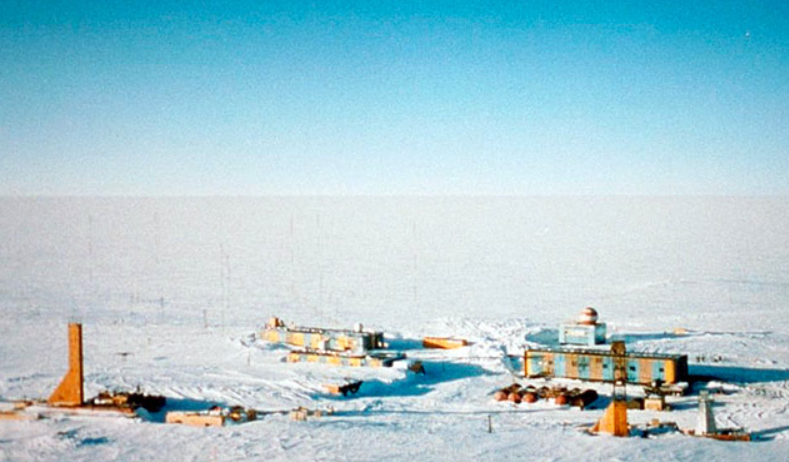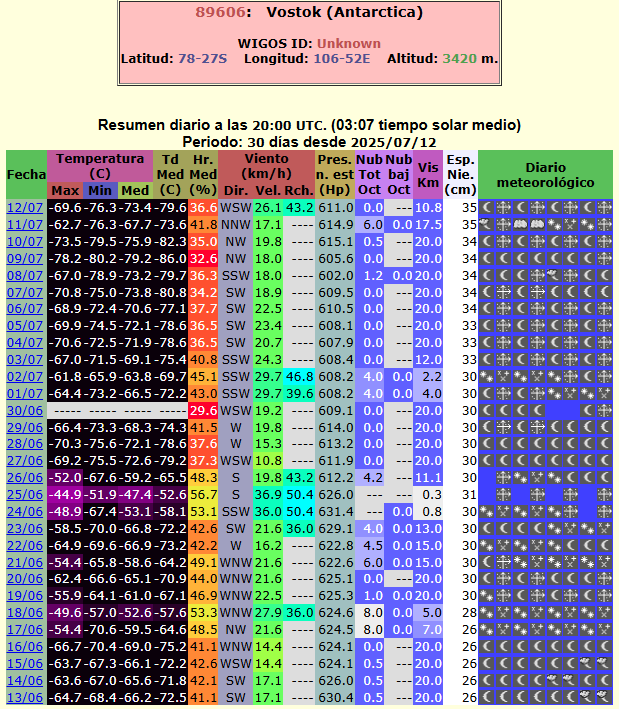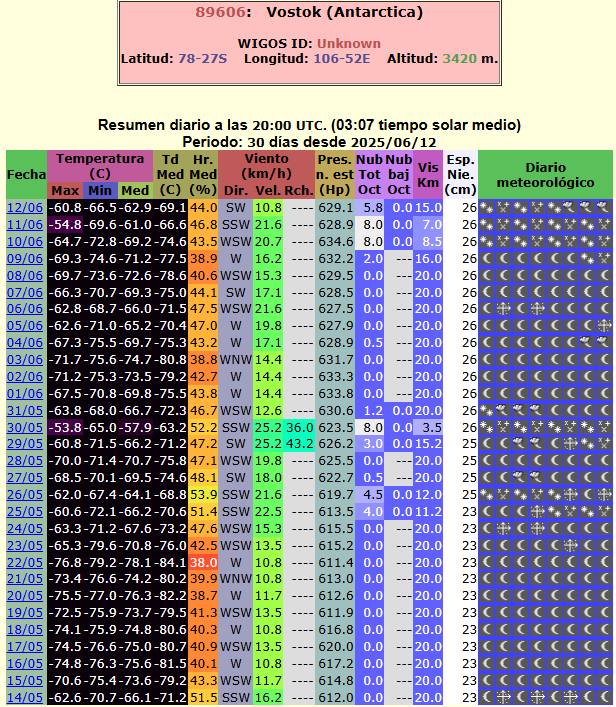
In one of the most extreme cold events on Earth this year, Vostok Station in Antarctica registered a staggering –80.2°C on July 9th, 2025, marking the coldest temperature of the 2025 Southern Hemisphere winter so far. This bone-chilling minimum, recorded in early July, is also the lowest temperature observed at Vostok since an unusually deep cold snap in late May, when temperatures briefly touched –79.6°C — itself a rare occurrence outside the deep core of polar winter.
Vostok, located near the geomagnetic South Pole and situated at an altitude of over 3,400 meters on the East Antarctic Plateau, is one of the coldest inhabited places on the planet. While it is not unusual for the mercury to drop below –75°C during the austral winter, temperatures crossing the –80°C threshold remain rare, even by Antarctic standards.
What makes this latest temperature particularly noteworthy is not just the raw number, but the sequence of significant cold anomalies seen in recent months. The –79.6°C recorded in late May was already abnormal for that time of year, as such values are typically reserved for the heart of Antarctic winter—July and August. The fact that July has now produced an even lower minimum confirms that 2025 is shaping up to be a notably cold year over the high Antarctic interior.
These extreme cold events are typically driven by a combination of clear skies, intense radiative cooling, and strong thermal inversion layers that form when the dense cold air becomes trapped near the surface under calm and dry conditions. A stable high-pressure system over East Antarctica has helped lock in frigid air masses over the plateau, allowing surface temperatures to plummet in recent days.
This event does not break any all-time records, however. The coldest temperature ever recorded on Earth remains –89.2°C, observed at Vostok on July 21, 1983. Nonetheless, descending below –80°C is rare in modern data, especially as warming trends have reduced the frequency of such extreme minima in recent decades.
Vostok’s readings also contrast sharply with temperature anomalies observed elsewhere across the globe. While Europe, Asia, and North America have been grappling with record-breaking heatwaves and unprecedented warmth, the Antarctic interior has exhibited classic polar behavior, emphasizing the growing thermal contrast between regions and the complexity of Earth’s climate system.
Such extremes offer critical insight for climatologists, as Vostok’s data provide a long, continuous benchmark of polar atmospheric conditions, invaluable for tracking long-term trends in global temperature, polar vortex strength, and the stability of the Antarctic atmosphere.
For now, Vostok’s –80.2°C reading stands as the coldest reliably measured temperature on Earth in 2025, a potent reminder that while much of the world warms, Earth’s coldest heart still knows how to deliver deep-freeze conditions.

Source: https://antarcticsun.usap.gov/science/2587/


Source: ogimet.com


























